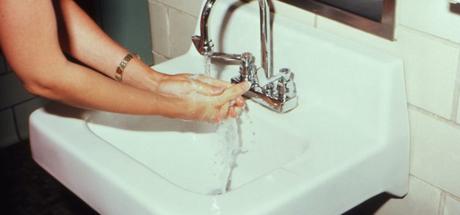
Many of us hunkered down and stayed close to home in 2020 because of the COVID-19 pandemic. But while we're still facing time at home, news of several successful vaccines means there is light at the end of the tunnel.
If you're like me, your wanderlust has grown stronger since I haven't been able to travel, and the thrill of the open road and friendly skies is calling. However, those desires are tempered by a bit (OK, a lot!) of anxiety over how I can reduce the risks of encountering viruses and bacteria on my trip.
You'll never be able to reduce your risk to zero, but this advice can help as you gear up for your next trip close to home or abroad.
Embrace Biometrics at an Airport Near You
The TSA unveiled their biometric screening roadmap in late 2018 and it continues to roll out across the country. It was launched to improve security, but it has the added benefit of reducing the manual part of the security screening process you'll encounter when leaving or entering the country. It's also being used increasingly for domestic travel.
Biometrics include facial recognition and fingerprinting. In most cases, you'll stand in front of an airport kiosk that captures your image and matches it to documents like a passport the Department of Homeland Security has on file for you. There's still some interaction with the TSA security screener currently, but they're piloting a self-service version in select airports.
The TSA does not keep your personally identifiable information on file after these screenings.
Avoid the Dirtiest Places on Your Route
Spoiler alert: Humans are dirty and the places we go most frequently wind up being the dirtiest. Bumping into these places is unavoidable during your trip, but it's good to be aware so you can take precautions and clean up afterward.
- The airplane bathroom: No surprise here, with the close proximity of toilet to sink and the inevitable dampness that happens when water sloshes around during turbulence. Wipe down surfaces before you use them, sanitize your hands once you get back to your seat, and be sure to avoid touching your face until you can wash your hands at your destination.
- The hotel room light switch, remote, and bedspread: Bring a pack of disinfecting wipes to clean hard surfaces when you enter the room, and remove the bed covering before you lay down.
- Other people's hands: Sadly, handshakes should be on hold for now. But beyond that, be mindful of anytime your hands come in contact with an object someone else has touched-signing a bill with a pen, handling your bag in baggage claim, opening a taxi door, etc. Keep a bottle of hand sanitizer close by.
Use This Simple Tool to Reduce Your Points of Contact
Looking for a fun and practical stocking stuffer for that travel enthusiast on your list-or for yourself? I bought a small device called a touchless door opener that fits on my keychain. It has a little hook for grabbing just about any door handle and a tip for tapping on kiosk buttons like ATMs.
Make sure it's brass or copper, which are inhospitable to germs. Also, be aware that inhospitable does not mean it kills germs on contact. One study showed that COVID-19 was detectable on these openers for up to 4 hours later, which is still much better than the several days it can live on other surfaces like plastic.
These tips, combined with social distancing, mask-wearing and regular handwashing, will help to reduce your risk of getting sick on your next trip.

